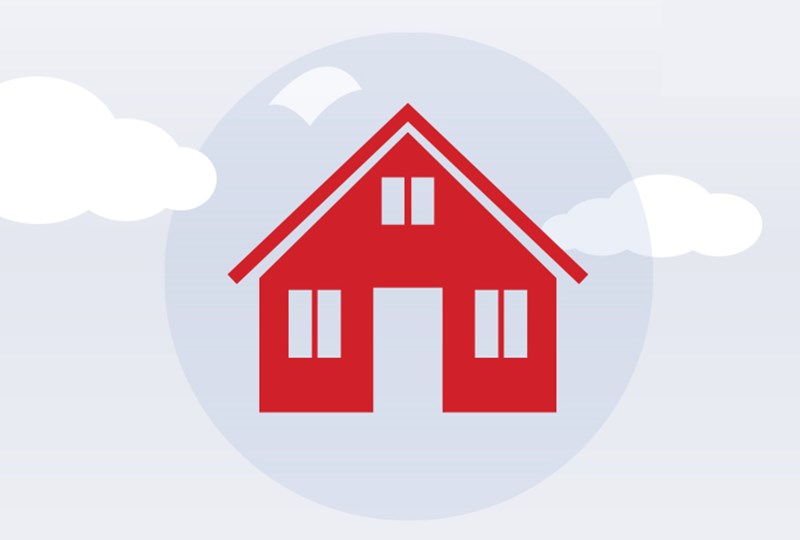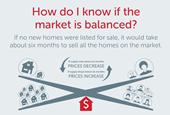
As our local market continues to improve, buyers, sellers and homeowners are wary that prices may be rising too much. To determine if we’re in a bubble today, we analyzed current market stats against some of the conditions related to the housing bubble that peaked in 2006. Let’s explore what they mean.

Appreciation
In the years before the bubble burst, our local market showed six years of double-digit price appreciation; the average appreciation year-over-year was 12 percent. Today, we’ve seen just 20 months of moderate appreciation – and the average appreciation in that time has been between 2-6 percent.
Lending practices
Prior to today’s market correction, interest rates were higher and some lenders were lending irresponsibly. In some cases, lenders were even issuing “no-doc” loans, where the borrower didn’t have to prove their income to get approval on a mortgage. Today’s lenders have tighter underwriting standards and for the last several years, interest rates have been low so homebuyers are able to gain equity on their homes more quickly.
Inventory
Before the bubble burst, inventory across our market was strong. Today, we see chronically low inventory across most market segments, especially on homes priced under $250,000.
New construction and investment buyers
In the lead up to 2006, builders were working on demand from speculative buyers, and new construction was booming. Investors who saw the high home price appreciation were buying up developments in droves. While builders today may have a few spec homes available, entire developments are no longer being built on sheer speculation alone. The new construction market is growing slowly and steadily.
Factors driving price growth
As the bubble grew in the 2000s, price growth was driven by home appreciation and loose lending practices. Today, prices are driven by low inventory (and high buyer demand) and low interest rates.
Rate of change
Changes in the market happened very quickly as the bubble grew in the 2000s. Homes moved very quickly, changes were dramatic and the pace for everyone—sellers, buyers, builders, agents and lenders—was accelerated. The speed of today’s market is much more moderate and methodical, with different market segments experiencing different change patterns and slow, steady change overall.
The verdict? A healthy market shift
As you can see, today’s market stats don’t match the data from the lead-up to the housing bubble. Because lenders are lending responsibly and rates, inventory, speculative buying and appreciation remain low, we believe that today’s housing market changes are the product of a healthy market shift.
But I heard the market is too hot!
For months, reports have told a story of a hot real estate market with buyers snatching up homes in no time and sellers enjoying competitive offers. While this is true in some markets and market segments, it doesn’t ring true for others. In most cases, statistics used to measure the market are aggregated across every market segment in our 13-county metro area and they can leave out key pieces of the puzzle.
A tale of two markets
A closer inspection of statistics in our local market reveals what is essentially two markets: one for first-time buyers (generally anything under $250,000) and another for higher priced homes ($500,000-plus), which we’ll refer to as upper-bracket homes.
Stat #1: Single-family homes in the 13-county Twin Cities metro sold in an average of 35 days
- $190,000– $250,000 homes || Sold in an average of 29 days
- $500,000+ homes || Sold in an average of 80 days
Stat #2: The number of homes for sale in the metro is down 15.7 percent
- $190,000– $250,000 homes || Inventory fell 24.7%
- $500,000+ homes || Inventory rose .3%
Stat #3: Our inventory is at a three-month supply, making it a sellers’ market
- $190,000– $250,000 homes || Supply is 1.9 months – Sellers’ market is even stronger
- $500,000+ homes || Supply is 8.3 months – The luxury market is a buyers’ market
Stats based on year-over-year data for 13-county metro area in August 2016
Stats provided by Northstar MLS
As you can see, the low-end market is suffering from a lack of inventory, which is driving the demand and creating an even bigger sellers’ market. The luxury market, on the other hand, has plenty of inventory and is in desperate need of buyers. To see how you can measure for a buyers’ market or sellers’ market, check out this infographic.
Want help navigating the market?
Edina Realty has more than 2,300 REALTORS® who can help you understand the factors affecting your neighborhood or desired area – down to the street level. Reach out today to get in touch with a local expert.
Plus, be sure to follow #BuyerInsights and #SellerInsights on Facebook, Twitter, YouTube and Instagram for more tips on buying or selling in this market.








